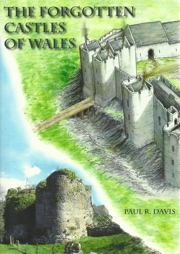A conservative estimate puts the number of castles in Wales at more than 500, with around 200 of these built in stone. The well-known ones peer across the valleys and town squares.
Millions of us have strolled through gatehouses, ducked into doorways, clambered up towers and tried to picture them in their brutal heyday, whitewashed and hung with tapestries. Davis, among other writers, has done them already. Now he’s inviting us to explore the less well-known sites, away from the tourist tracks. These are the ones that were never dressed up with ticket offices and car parks.
His only qualification is that they were made of stone. Hundreds of earthen ringworks and mottes that never evolved from wooden palisades and buildings await another investigator.
Davis begins by summarising the chronology of castle buildings in Wales, starting with those constructed by the Norman Marcher Lords to stamp their authority on a newly invaded countryside.
The Welsh lords adopted the continental fashion, and Davis summarises the changing architectural styles as fortresses became gracious Tudor homes before the cannons of the 17th century English Civil Wars made most of them redundant wrecks.
He takes us to some sites that are now no more than a heap of rubble covered with trees. Others, like some tower houses in Pembrokeshire, surprisingly survive as agricultural outbuildings, while there are some towering remains that are still not cared for by Cadw or the National Trust.
Monmouthshire offers some of the more spectacular ruins, while the “lesser” sites listed here include Cardigan, perhaps the last major historic site to be rescued from decay and neglect, Hay-on-Wye’s imposing edifice and Nevern, now owned by the local community council and undergoing excavation.
You won’t have to leave your armchair to enjoy the potted histories, excellent colour photographs and architecturally imaginative black and white recreations from Davis’ draughtsman’s drawing board, but anyone that wants to be more adventurous will find directions, grid references and access details from each of the 53 castles. (Review by Steve Dube for
WalesOnline








